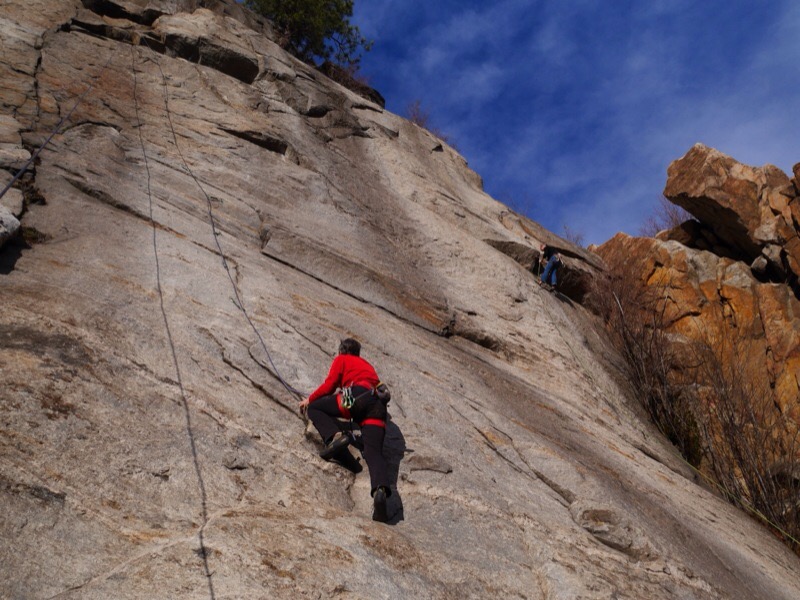
—
Part of TAWKROC’s mandate is to encourage new outdoor routing in the Kootenay region. And in order to see that happen we offer reimbursement funds for route setters. To be eligible for application, we recommend you read our Route Building 101 Guidelines and make sure your membership has been renewed for this year. Beyond that, eligible applications will be determined by a majority vote of the TAWKROC directors based on the criteria below.
How to Apply
To apply for reimbursement, become a member of TAWKROC and then send an email to the board of directors at directors@tawkroc.org requesting a Claim Form. Fill in the appropriate information on the form and email it back. Here is a list of the criteria the TAWKROC board will be following:
- Only routes that have had a First Ascent (FA) will be considered.
- Fixed protection covers stainless steel bolts and hangers only (no pins, fixed wires or non-stainless hardware).
- Anchors must be manufactured for climbing usage (i.e. Fixe) or stainless steel chains and quicklinks to a min. of 5/16” (3/8” quicklinks are recommended at focal points for longer wear). No slings, pitons, wires, etc. Chains on trees are only to be used as a last resort.
- All bolts placed must be a minimum of 3/8’’ thick stainless steel and hangers must be UIAA or CE approved.
- Following the UIAA standard for rock anchors, in-hole bolt depths must be at least 5 times the hole diameter (not including the external bolt length assigned for the hanger, washer and nut). This means a min. bolt length of 2 ½” in hard rock like quartzite (if no washer is used and the bolt extends beyond the nut no more than 3/16”). Multi-pitch routes equipped ground up with shorter bolts can be dealt with on a case-by-case basis.
- Bolt depths should be such that threads are visible above the nut (to ensure the nut is fully threaded) but not protrude beyond the nut more than ½” (for “D” length 3” bolts).
- Bolts placed for climbing anchors must have hangers (i.e. not chain links directly over the studs).
- Details of all routes should have been made public.
- Routes claimed should be the applicant’s projects only.
- Do not claim for reimbursement on hardware that has already been funded by another source.
- Joint projects are eligible to a fraction of the cost proportional to the number of accredited TAWKROC members contributing to the project. (e.g. only 50% of cost is eligible on a joint claim from 1 member and 1 non member).
- Retrofits must be deemed necessary for safety and be done with permission from the first ascensionist(s) if at all possible.
- Poorly setup routes (i.e. bolts in fractured or weak rock, unnecessarily wandering bolt placements, “squeezed” lines, generally poor rock quality, insufficiently cleaned rock, dangerously perched overhead hazard…) will not be considered eligible.
- Obscure locations, poor access, limited climbing, chiseling and questionable route quality may all be reasons why routes may not be considered eligible.
- Spacing of bolts from other bolts (anchors), old bolt holes (retrobolts) and from rock edges, should ideally be at least 20cm whenever conditions allow
- Ideally holes should be drilled slightly longer than the bolt length (overdrilled) so that studs can be easily “erased” if necessary
- Bolt & anchor camouflaging should be considered in high visibility areas
Priorities
Approved retrofits, enviro projects, and access protection projects take precedence over bolt reimbursement. The BOD reserves the right to allocate higher amounts of funding to projects deemed more contributory to the climbing community.
Fund Disbursements
On or before Dec. 1 of each year, TAWKROC members may apply for reimbursement on out of pocket expenses for retrofits and newly placed bolts placed after Dec. 1 of the previous year.
Following applications on Dec. 1 of each year, the amount available for disbursement will be tallied and compared to the total eligible applications amount. If for example $500 is available and the eligible applications amount is $400, then 100% of eligible applications will be paid out and $100 will be transferred to the following year. If $500 is available, and the eligible applications amount is $1000, then 50% of eligible applications will be paid out.
